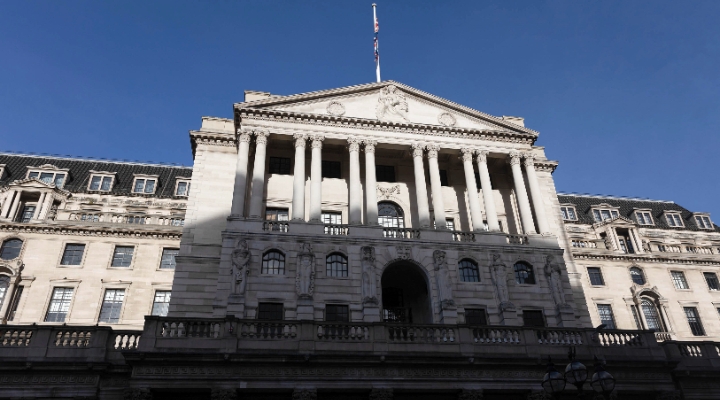The three main numbers an investor encounters when buying a bond are the price (P), the coupon rate (C) and the yield-to-maturity (Y). The par value of a bond is the price originally paid at issue, which is close to if not the same as the face value – the value written on the bond such as £100, £500 or £1000. Thereafter the price is the amount an investor pays for the bond in the open market and further mentions of price in this analysis refer to that figure.
Coupon rate
The issuers of bonds realise they must compensate the investor for two things: the surrender of his money to the firm or government until a future date and the effect of inflation – the loss in purchasing power the investment will have sustained over the life of the debt.
So in addition to repaying the principal at maturity bond issuers also pay regular interest payments based on the coupon rate. The coupon rate specifies the rate of interest to be paid every year, or half-year depending on the type of bond, and this is fixed in almost all cases. For the sake of simplicity assume this article is only looking at fixed coupon rates.
Yield to maturity
Once investors have bought a bond they do not need to hold it until maturity. They may sell it on the open market but may receive more or less than they paid depending on market conditions. The yield to maturity is simply the market price of a bond – how much the market is willing to pay the investor for his bond.
The yield to maturity indicates the price the investor is willing to pay today in return for receiving money later in the form of the regular coupon rate payments and the principal at maturity.
Yield and price have an inverse relationship. If yields rise, bond prices fall and if yields fall then bond prices rise. Take for example a bond with a yield to maturity running at 7%. If it rises next week to 10% then the bond price falls and the investor is paying less for the same string of future cash flows. If it falls to 5% the bond becomes more expensive because the investor is paying more money for the same cash flows.
Throughout this article XYZ bond will be a running example used to explain the relationship between these three components and other aspects of a bond.
XYZ bond
|
|
|
Par value |
£100 |
|
Coupon rate (C) |
6% |
|
Maturity |
Five years |
|
Current yield to maturity (Y) |
5% |
To see a series of examples which shows step-by-step how the relationship between price, yield to maturity and the coupon rate works please click here: How price, yield and the coupon rate interact.
Using the current figures shown in the above box the price of XYZ bond is found to be £104.32. If the yield to maturity falls to 3% – the market is only willing to pay less for the bond – then the price rises to £113. 75. The bond is more expensive because the string of future cash flows - coupon payments and repayment of principal - the investor will receive is the same as when it cost £104.32 but the investor has to pay £113.75 for them.
If the yield to maturity rises to 7% then the price falls to £95.91. The bond is cheaper to investors because they will receive for £95.91 those same future cash flows that previously cost £104.32.
Understanding duration
The maturity of the bond also matters. The greater the maturity – the longer the life of the bond – the stronger the effect with regards to gains and losses is of a changed yield. The measure for this influence is called modified duration. To understand modified duration it helps to first look at duration.
Duration is a measure of what is known as cash-flow weighted maturity. That sounds like a mouthful at first but following a simple calculation makes it clear.
With a bond the investor sees most of his return towards the end of the maturity of the bond. He receives those regular coupon payments but the bulk of the money is returned in the last year when he gets a coupon payment and the principal is returned.
For those interested in following the calculations, take the first example (How price, yield and the coupon rate interact) with the 5% yield: the annual payments were fairly steady after the effect of inflation was taken into account but most of the money, £83.05, was returned in the last year.
Therefore in terms of repayment the later years carry more weight, or importance. To reflect this, the cash-flows are multiplied by a weighting as part of calculating duration to show when in the life of the bond an investor can expect to receive most of his investment back.
The first step in figuring out duration is looking at the present value of each of the annual cash flows [in the form of coupon payments] and the bond principal [face value amount returned at maturity]. The present value of these payments is used to reflect the fact that, for example, £5 received in three years will not buy as much as £5 received today once the effect of inflation has been taken into account.
Then the cash flow for year one is multiplied by one, for year two by it is multiplied by two and so on for the remainder of the cash flows. These numbers are added up and in this case, using the figures given for the XYZ bond, the total comes to £426.16. This figure is divided by the price to determine the duration.
£462.16 / £104.32 = 4.43 years.
So this shows that the average time at which XYZ bondholder’s investment is paid back will be 4.43 years.
The formulas showing these figures worked out can be viewed by interested readers by clicking here: Step-by-step duration calculation.
Modified duration
Once duration has been calculated investors can measure the modified duration of a bond. It is a useful number to know because it enables investors to measure the sensitivity of bond prices to small changes in yield.
Modified duration is worked out by inserting the numbers into this simple formula.
Modified duration = Duration / (1 + yield)
Continuing with the example above, plug in the numbers that have already been calculated:
Modified duration = 4.43 years / (1+ 5%) = 4.21
So if the yield fell by 0.5%, the price would go up by 4.21 x 0.5% = 2.1%. If the yield rose by 0.5%, the price would fall by 2.1%.
Modified duration is a standard risk measure in bond fund management but it is important to remember that it is used only for small movements in yield.
Readers seeking a refresher on bonds and bond funds may wish to read the first two parts of Morningstar’s series:
Part one – What is a bond?
Part two – Influences on bond returns








:quality(80)/cloudfront-us-east-1.images.arcpublishing.com/morningstar/K37XP2B425AIRFXOASS7WIGPLM.jpg)


















